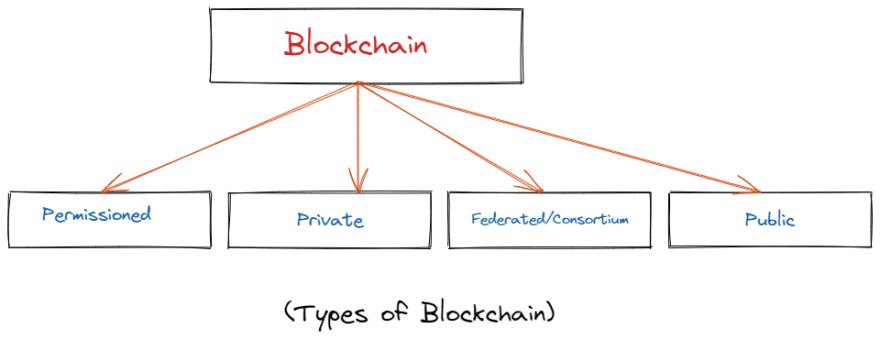Hey all,
I know all are doing good only, that's great!
Today I come up with a new article on types of blockchain.
Before that, I am assuming you have an idea about blockchain technology. If not please read my previous article about this.
Awesome!
Why wait then? let's start :)
So, as you know, a blockchain is a chain of data blocks stored in hundreds or thousands of computers or servers distributed over a wide geographical area. It is a complete ledger that maintains a copy of all the credit/debit(not in all cases) transactions of a digital asset. And, blockchain is based on decentralized technologies.
Got some idea?
Superb!
Now, let's see how many types of blockchains are available.
As you can see in the above image, there are 4 types of blockchain is available.
They are
- Permissioned Blockchain
- Private Blockchain
- Federated/Consortium Blockchain
- Public Blockchain
Let's see them one by one.
1. Private Blockchain
A private blockchain is also called the permissioned blockchain. In this type, only the individuals involved in a contract will have the information of it, while the others will not be able to access it. It is also a faster and more cost-effective system. Only authorized nodes can read and write the transaction data into this blockchain. But, a private blockchain is less secure as compared to a public blockchain.
Example:- Linux foundation's Hperledger Fabric.
2. Public Blockchain
A public blockchain is a permissionless blockchain. Anybody can access the network and read-write on participants without explicit authorization and permission.
Example:- Bitcoin, Litecoin, Ethereum, etc.
3. Federated/Consortium Blockchain
A consortium or federated blockchain is a private, permissioned blockchain. It is opposed to the public blockchain, where entities can only become members of the network by prior approval or voting. In this type of blockchain, permissions are vested in a group of companies to individuals. Also, only consortium members can make, validate, and renew the transactions.
Example:- R3 Corda Blockchain
A permissioned blockchain is the same as a private blockchain.
I am now 100% sure, you have got some idea about the types of blockchain.
That's Great!
This is all for today, see you soon with a new interesting article. I hope you enjoy this reading.
Cheers!




Top comments (0)